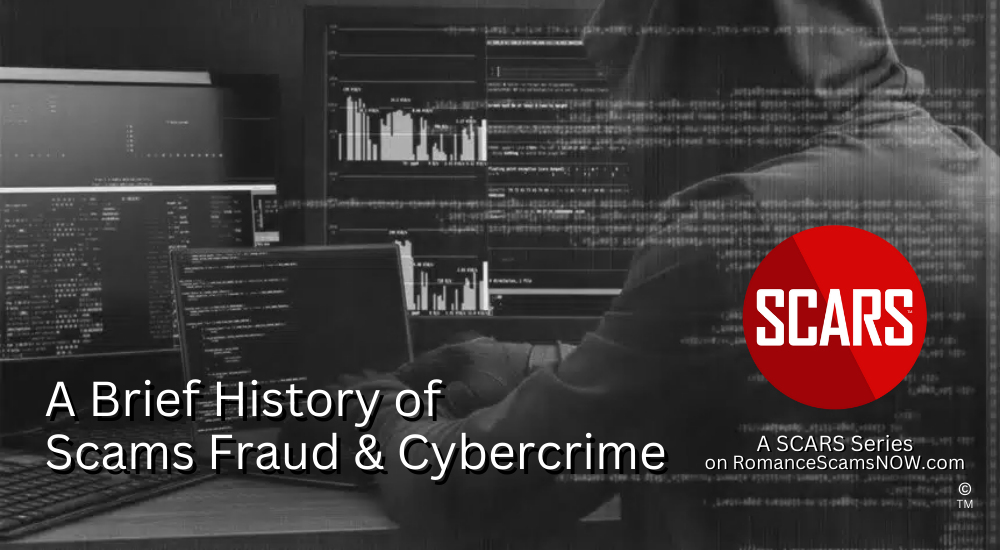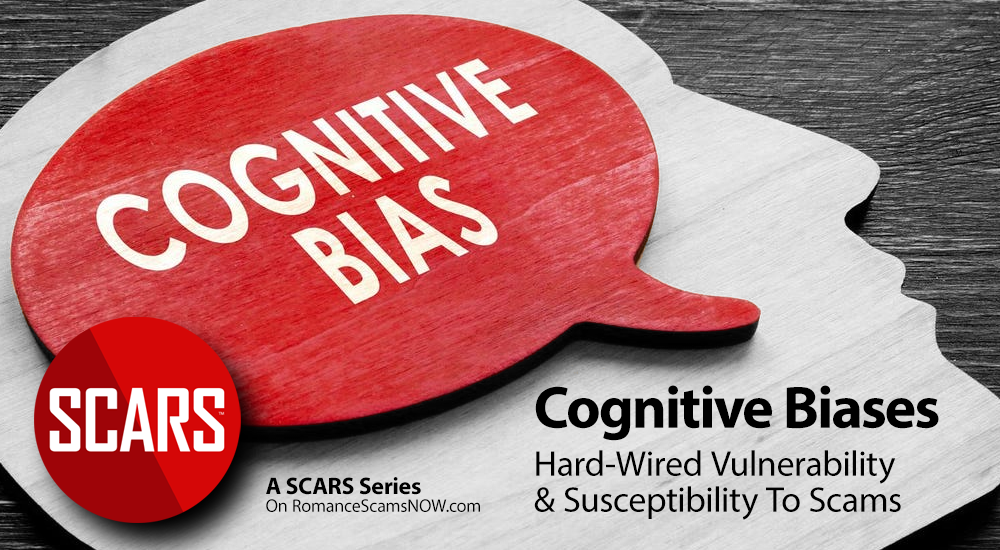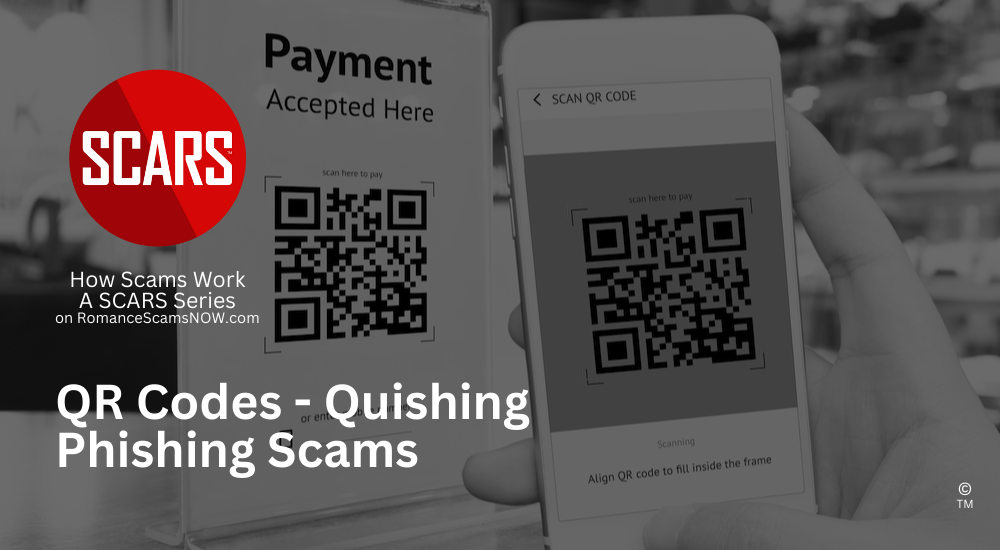Author:
• SCARS Editorial Team – Society of Citizens Against Relationship Scams Inc.
Article Abstract
The rise of QR code phishing scams, or “quishing,” marks a significant evolution in cybercrime tactics, exploiting the widespread adoption of QR codes to deceive users and compromise organizational security.
Recent research highlights alarming trends, including the targeting of high-ranking executives and specific industries, with 89.3% of attacks being credential phishing attempts.
Despite the emergence of QR code attacks, traditional threats like Business Email Compromise (BEC) and Vendor Email Compromise (VEC) persist, underscoring the adaptability of cybercriminals.
With phishing, including QR code phishing, remaining a prevalent threat, organizations must implement proactive security measures, including employee education, advanced email security solutions, and multi-factor authentication, to mitigate the risk of compromise.
As cybercriminals continue to innovate, vigilance and robust defense strategies are crucial in safeguarding against evolving threats in the digital landscape.

Evolution of Phishing: The Rise of QR Code Attacks on Corporate Scamming
As technology advances, so do the tactics of cybercriminals. Phishing, a form of cybercrime that relies on deception to steal sensitive information, has undergone significant evolution over the years. One of the latest innovations in this realm is QR codes phishing, also known as “quishing.” This article delves into the emergence of QR code attacks, their implications for organizations, and strategies for mitigating this evolving threat.
What are QR Barcodes?
QR codes, short for Quick Response codes, are two-dimensional barcodes that contain information encoded within a square grid of black squares on a white background. Developed in 1994 by Denso Wave, a subsidiary of Toyota, QR codes were initially used in the automotive industry for tracking parts during manufacturing. However, their versatility and ease of use have led to widespread adoption across various industries and applications.
QR codes can store a wide range of data types, including:
- Text: QR codes can encode alphanumeric characters, allowing them to store text-based information such as website URLs, contact details, or simple messages.
- URLs: One of the most common uses of QR codes is to encode website URLs. Scanning a QR code containing a URL can quickly direct users to a specific webpage without the need to manually type the address.
- Contact Information: QR codes can store contact details such as names, phone numbers, email addresses, and physical addresses. Scanning these codes can automatically add the contact information to a user’s address book.
- Wi-Fi Credentials: QR codes can encode Wi-Fi network credentials, including SSID (network name) and password, allowing users to quickly connect to a wireless network without manually entering the information.
- Geolocation Coordinates: QR codes can encode geographic coordinates (latitude and longitude), enabling users to navigate to a specific location using mapping applications.
QR codes are designed to be easily scanned and decoded using a smartphone or dedicated QR code reader. Once scanned, the encoded information is extracted and presented to the user, who can then take appropriate action based on the content of the QR code.
The adoption of QR codes has expanded rapidly in recent years, driven by factors such as increased smartphone penetration, improved camera technology, and the need for contactless interactions. QR codes are now used in various applications, including marketing campaigns, ticketing systems, payment solutions, inventory management, and COVID-19 contact tracing.
Overall, QR codes provide a convenient and efficient means of sharing information digitally, making them a valuable tool for businesses, organizations, and individuals alike.
QR Codes Attacks: The New Face of Phishing
QR codes phishing involves the use of QR codes embedded in emails or other digital communications to deceive recipients into disclosing sensitive information. These malicious QR codes typically lead to fake login pages or websites designed to capture login credentials, financial data, or other personal information. Despite being a relatively new tactic, QR code attacks have gained traction among cybercriminals due to their effectiveness and the widespread adoption of QR code technology.
Recent research has revealed alarming trends in QR code attacks:
- Targeting C-Suite Executives: High-ranking executives are prime targets for QR code attacks, receiving 42 times* more attacks than the average employee. Cybercriminals exploit the authority and access of executives to gain entry into organizational networks and extract valuable data.
- Industry-Specific Targeting: Certain industries, such as construction and engineering, are disproportionately targeted by QR code phishing campaigns. These sectors experience Quishing attacks at a rate 19 times higher than others, highlighting the need for tailored security measures in vulnerable industries.
- Credential Phishing Dominance: A staggering 89.3%* of QR code attacks are credential phishing attempts. By tricking users into entering their login credentials on fake websites, cybercriminals can hijack accounts, steal sensitive data, and launch further attacks.
The Persistence of BEC and VEC Attacks
While QR code phishing represents a novel threat, cybercriminals continue to rely on traditional attack methods such as Business Email Compromise (BEC) and Vendor Email Compromise (VEC). BEC attacks, in which threat actors impersonate company executives or trusted partners to deceive employees into transferring funds or sensitive information, have surged by 108% year-over-year. Similarly, VEC attacks, targeting vendors and suppliers to compromise payment systems or supply chains, have seen a 50% increase in frequency.
These sustained upward trends underscore the adaptability and persistence of cybercriminals in exploiting email as a vulnerable attack vector. As organizations fortify their defenses against emerging threats like QR code phishing, they must remain vigilant against established attack techniques like BEC and VEC.
Email: A Universal Target for Cybercrime
Email remains the cornerstone of business communication, offering a convenient and ubiquitous platform for exchanging information. Unfortunately, this universal reliance on email also makes it a lucrative target for cybercriminals seeking to exploit vulnerabilities in organizational defenses. With millions of new employees entering the workforce annually, threat actors have a constant stream of potential targets to exploit.
Phishing: The Ever-Present Threat
Phishing attacks, including QR code phishing, continue to pose a significant risk to organizations worldwide. Credential phishing, in particular, accounts for over 73%* of all advanced email attacks, making it the most prevalent form of cybercrime. Despite its relatively low ranking in terms of total losses, phishing serves as a gateway to a wide range of malicious activities, from data theft to financial fraud.
The Appeal of QR Code Phishing
QR code phishing represents a significant advancement in phishing tactics, leveraging familiar technology to deceive unsuspecting users. Several factors contribute to the appeal of QR code attacks for cybercriminals:
- Widespread Adoption: The ubiquity of QR codes in everyday life, from restaurant menus to event tickets, makes recipients less suspicious of scanning QR codes received via email.
- Security Bypass: QR codes bypass traditional email security measures by redirecting targets to external websites, minimizing the detection footprint of phishing campaigns.
- End-User Trust: End users are less likely to scrutinize QR codes compared to hyperlinks, creating an opportunity for attackers to exploit trust and familiarity.
Mitigating the Threat of QR Code Attacks
As organizations confront the growing menace of QR code phishing, proactive measures are essential to mitigate the risk of compromise:
- Employee Education: Provide comprehensive training and awareness programs to educate employees about the dangers of QR code phishing and how to recognize suspicious communications.
- Email Security Solutions: Deploy advanced email security solutions capable of detecting and blocking phishing attempts, including those utilizing QR codes.
- Security Policies: Implement robust security policies and procedures governing the use of QR codes in digital communications, including guidelines for scanning QR codes safely.
- Multi-Factor Authentication: Enforce multi-factor authentication (MFA) protocols to enhance account security and mitigate the risk of unauthorized access resulting from compromised credentials.
- Vendor Risk Management: Strengthen vendor risk management practices to minimize the impact of VEC attacks and safeguard critical supply chain relationships.
Summary
QR codes phishing represents a significant evolution in phishing tactics, exploiting familiar technology to deceive users and compromise organizational security. As cybercriminals continue to innovate and adapt, organizations must remain vigilant against emerging threats while fortifying defenses against established attack vectors like BEC and VEC. By adopting proactive security measures and empowering employees
* According to Abnormal Security
More QR Code and Phishing Scams:
- QR Code ‘Quishing’ Is The Latest Form Of Phishing Scams 2023 (romancescamsnow.com)
- QR Code Scams (romancescamsnow.com)
- Phishing, Vishing, or Smishing – Phishing Scam Types – What Is The Difference? (romancescamsnow.com)
- New Social Engineering Scams (romancescamsnow.com)
- Phishy Emails – Phishing Scams Guest Article by Dana Mantilla (romancescamsnow.com)
- There Is A New Kind Of Phishing Called Whaling Scam Attacks (romancescamsnow.com)
- SCARS™ Guide: Phishing Email Scams (romancescamsnow.com)
- How Scams Work: Typical Phishing Attacks (romancescamsnow.com)
- The Difference Between Spam Emails And Phishing Emails – a SCARS™ Guide (romancescamsnow.com)
-/ 30 /-
What do you think about this?
Please share your thoughts in a comment below!
Article Rating
Table of Contents
- Understanding These New Phishing Scams
- Article Abstract
- Evolution of Phishing: The Rise of QR Code Attacks on Corporate Scamming
- What are QR Barcodes?
- QR Codes Attacks: The New Face of Phishing
- The Persistence of BEC and VEC Attacks
- Email: A Universal Target for Cybercrime
- Phishing: The Ever-Present Threat
- The Appeal of QR Code Phishing
- Mitigating the Threat of QR Code Attacks
- Summary
- More QR Code and Phishing Scams:
RATE THIS ARTICLE?
LEAVE A COMMENT?
Recent Comments
On Other Articles
- Nikolaus on Dating Scammers Paradise: Ivory Coast: “The Ivory Coast romance scam is still going on. It seems that local authorities don’t handle the issue effectively!” Dec 10, 02:17
- on The SCARS Institute Top 50 Celebrity Impersonation Scams – 2025: “Thank you – we will.” Dec 7, 11:41
- on The SCARS Institute Top 50 Celebrity Impersonation Scams – 2025: “You should add Sean Bean to your list of Celebrities. This one is very good, and persistent. He will be…” Dec 2, 12:07
- on How You Think & Talk About Your Scam Affects Your Recovery: “I have hung on to the scams for far too long. With the intervention of an all-merciful God, I have…” Nov 6, 22:13
- on Disengaging From A Fake Scam Relationship: “Taci, you may want to join our new support community at www.SCARScommunity.org” Nov 6, 03:01
- on Disengaging From A Fake Scam Relationship: “This particular article helped me discover the many things I did wrong the first time I was scammed. I should…” Nov 5, 22:49
- on About the SCARS RomanceScamsNOW.com Website – 24 Years Published: “It was unavailable for a few days, but it is available again. If he would be interested, he is welcome…” Nov 5, 00:59
- on About the SCARS RomanceScamsNOW.com Website – 24 Years Published: “My husband has been scammed and your classes have been helping him but now he can’t seem to access them.…” Oct 26, 14:57
- on Talia Shepard – Impersonation Victim – Stolen Photos – 2024: “Hi, I’m Patrick from Belgium and I found this site by chance, so I just got to know it, and…” Oct 17, 23:46
- on Talia Shepard – Impersonation Victim – Stolen Photos – 2024: “Hallo ik ben Patrick uit Belgie en het is in verband over PayPal. Ik heb het dit jaar spijtig genoeg…” Oct 17, 23:08
ARTICLE META
Important Information for New Scam Victims
- Please visit www.ScamVictimsSupport.org – a SCARS Website for New Scam Victims & Sextortion Victims
- Enroll in FREE SCARS Scam Survivor’s School now at www.SCARSeducation.org
- Please visit www.ScamPsychology.org – to more fully understand the psychological concepts involved in scams and scam victim recovery
If you are looking for local trauma counselors please visit counseling.AgainstScams.org or join SCARS for our counseling/therapy benefit: membership.AgainstScams.org
If you need to speak with someone now, you can dial 988 or find phone numbers for crisis hotlines all around the world here: www.opencounseling.com/suicide-hotlines
A Note About Labeling!
We often use the term ‘scam victim’ in our articles, but this is a convenience to help those searching for information in search engines like Google. It is just a convenience and has no deeper meaning. If you have come through such an experience, YOU are a Survivor! It was not your fault. You are not alone! Axios!
A Question of Trust
At the SCARS Institute, we invite you to do your own research on the topics we speak about and publish, Our team investigates the subject being discussed, especially when it comes to understanding the scam victims-survivors experience. You can do Google searches but in many cases, you will have to wade through scientific papers and studies. However, remember that biases and perspectives matter and influence the outcome. Regardless, we encourage you to explore these topics as thoroughly as you can for your own awareness.
Statement About Victim Blaming
Some of our articles discuss various aspects of victims. This is both about better understanding victims (the science of victimology) and their behaviors and psychology. This helps us to educate victims/survivors about why these crimes happened and to not blame themselves, better develop recovery programs, and to help victims avoid scams in the future. At times this may sound like blaming the victim, but it does not blame scam victims, we are simply explaining the hows and whys of the experience victims have.
These articles, about the Psychology of Scams or Victim Psychology – meaning that all humans have psychological or cognitive characteristics in common that can either be exploited or work against us – help us all to understand the unique challenges victims face before, during, and after scams, fraud, or cybercrimes. These sometimes talk about some of the vulnerabilities the scammers exploit. Victims rarely have control of them or are even aware of them, until something like a scam happens and then they can learn how their mind works and how to overcome these mechanisms.
Articles like these help victims and others understand these processes and how to help prevent them from being exploited again or to help them recover more easily by understanding their post-scam behaviors. Learn more about the Psychology of Scams at www.ScamPsychology.org
Psychology Disclaimer:
All articles about psychology and the human brain on this website are for information & education only
The information provided in this article is intended for educational and self-help purposes only and should not be construed as a substitute for professional therapy or counseling.
While any self-help techniques outlined herein may be beneficial for scam victims seeking to recover from their experience and move towards recovery, it is important to consult with a qualified mental health professional before initiating any course of action. Each individual’s experience and needs are unique, and what works for one person may not be suitable for another.
Additionally, any approach may not be appropriate for individuals with certain pre-existing mental health conditions or trauma histories. It is advisable to seek guidance from a licensed therapist or counselor who can provide personalized support, guidance, and treatment tailored to your specific needs.
If you are experiencing significant distress or emotional difficulties related to a scam or other traumatic event, please consult your doctor or mental health provider for appropriate care and support.
Also read our SCARS Institute Statement about Professional Care for Scam Victims – click here to go to our ScamsNOW.com website.


















Thank you for your comment. You may receive an email to follow up. We never share your data with marketers.